Can You Drive a Classic Car in the Winter?
Table of Contents
Ah, winter – the season of snowball fights, hot cocoa, and… driving your classic car? That’s the question that has many vintage automobile aficionados scratching their heads (and probably their frosty windshields) every year.
I’ve pondered this conundrum more times than I can count, and I’ve had my fair share of frosty adventures in my own classics.
The great debate of driving a classic car in the winter is akin to asking whether you should wear your favorite suede shoes in the rain. Sure, you can, but should you?
Today, we’ll delve into the icy world of winter driving with your prized classic car, examining the pros and cons while sprinkling in a bit of my own experience and perspective on the topic.
By the end of this article, you’ll have a clearer understanding of what to expect when taking your classic car for a spin in winter wonderland, and you’ll be better equipped to make an informed decision.
So, grab a cup of hot cocoa, and let’s get started on this frosty journey!
Understanding the Pros and Cons
As with most things in life, there are two sides to the coin when it comes to driving your classic car in the winter.
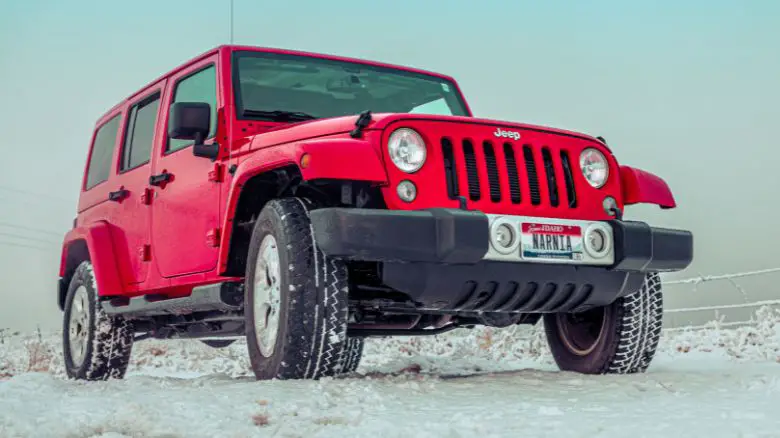
Let’s break down the advantages and disadvantages, so you can make an educated decision that suits your needs, your car’s needs, and your driving preferences.
Pros:
Enjoyment: Let’s face it, classic cars are a pure joy to drive, so it’s a shame these pleasures have to be confined to sunny summer days.
Experiencing the thrill of cruising through a picturesque winter landscape can create unforgettable memories and add an extra layer of charm to your classic car adventures.
Keeping the engine in shape: Believe it or not, occasional winter drives can be beneficial for your car.
Just like humans, cars don’t like to sit idle for too long. Starting and driving your classic car during the winter can help prevent seals from drying out and keep the engine running smoothly.
A conversation starter: Classic cars are attention magnets, and taking your beauty out for a winter spin can lead to some fantastic conversations with fellow car enthusiasts or curious onlookers.
Cons
Rust and corrosion: One of the biggest concerns when it comes to driving a classic car in the winter is the potential for rust and corrosion, especially with the salt and chemicals used on roads to combat ice.
These substances can quickly eat away at your car’s body and undercarriage, leading to costly repairs.
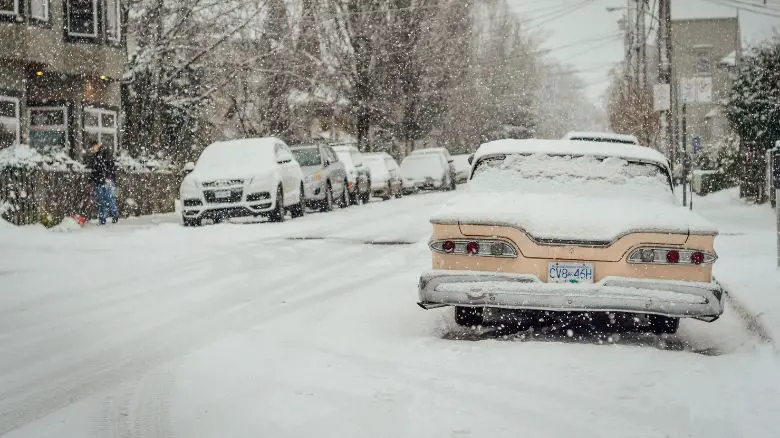
In the case of classic cars, too much exposure to salt can signal an untimely death if it’s left to fester for too long.
Poor handling and traction: Classic cars often lack the modern safety features and handling characteristics of their contemporary counterparts.
This can make winter driving particularly challenging, as your classic car might struggle to maintain traction or handle slick road conditions.
Increased wear and tear: Cold temperatures can exacerbate the natural wear and tear on your classic car, leading to potential mechanical issues.
The constant exposure to moisture, dirt, and road debris during winter driving will take its toll on your beloved classic.
Preparing Your Classic Car for Winter Driving
So, you’ve decided to brave the elements and take your classic car for a winter escapade? Excellent! I applaud your adventurous spirit.
But before you hit the icy roads, it’s crucial to ensure your classic car is properly prepared for the journey ahead.
Here are some essential steps to get your vehicle winter-ready.
Inspecting and maintaining the car
Check fluids and antifreeze levels: Just like you’d wrap up to face the cold, your classic car needs proper protection too.
Ensure that your car’s fluids, including oil, transmission fluid, and brake fluid, are all at the correct levels.
Most importantly, ensure you have the correct antifreeze concentration in your coolant, as it will prevent your engine from freezing in low temperatures.
Examine tires and replace if necessary: Your tires are your vehicle’s connection to the road, and in winter conditions, having good traction is vital.
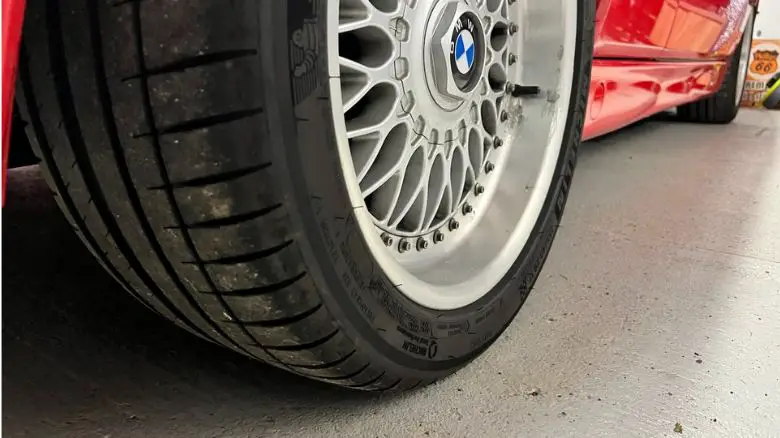
Inspect your tires for wear and tear, and replace them if they’re bald or have insufficient tread depth.
If your car has been locked away in the garage for a while or sat idly on the driveway, you should also ensure the tires are properly inflated and not flat-spotted.
Inspect brakes, suspension, and battery: Cold temperatures can affect your car’s mechanical components, so it’s essential to ensure that everything is in tip-top shape.
Check your brakes for proper operation early on in the journey, and arrange to replace worn brake pads or other components if needed.
Inspect the suspension for signs of wear or damage, and make sure your battery is fully charged and free of corrosion.
Winterizing your classic car
Rustproofing and undercoating: Rust is the enemy of classic cars, and winter is its favorite time to attack.
If you’re going to be regularly using your classic in the winter, consider applying rustproofing and undercoating products to protect the body and undercarriage from salt, moisture, and road debris.
There are varying views on whether this should be done, and it will also depend on the rarity and value of your car, and how original you want to keep the underside looking.
Weatherstripping and sealing gaps: Cold drafts and moisture can quickly find their way into your classic car through small gaps or damaged seals. And trapped moisture can cause a whole host of problems.
Inspect your car’s weatherstripping and seal any gaps to keep the cold air and moisture out, ensuring a comfortable and dry driving experience.
Installing winter tires or snow chains: If you’re planning on driving your classic car in snowy or icy conditions, investing in winter tires or snow chains can make a world of difference.
Winter tires are designed to provide better traction and handling on slippery surfaces, while snow chains can offer extra grip when the going gets tough.
Keep in mind that snow chains may not be suitable for all classic cars, so consult your owner’s manual or a trusted mechanic for advice.
By taking the time to prepare your classic car for winter driving, you’ll not only enhance your safety and comfort on the road but also help protect your prized investment from the harsh elements.
Assessing the Risks and Making the Decision
As we’ve explored throughout this article, driving your classic car in the winter can be both a thrilling and daunting endeavor.
Before you grab your keys and set off into the snowy unknown, it’s essential to take a step back and carefully assess the risks involved.
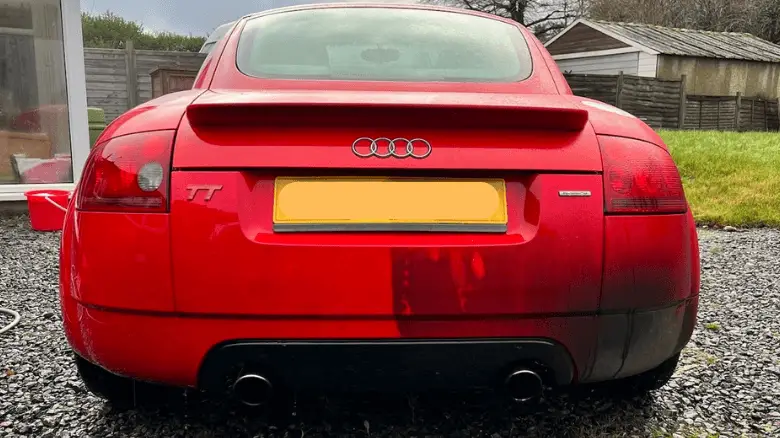
Here are some factors to consider when making your decision.
Weighing the potential benefits and drawbacks
The excitement and enjoyment of winter driving must be balanced against the potential for rust, wear and tear, and handling difficulties.
Take an honest look at your classic car’s condition, and consider whether the joy of the experience outweighs the potential risks.
If you’re able to thoroughly clean any dirt, debris, and salt off your car after each drive, you have a much better chance of preventing long-term damage.
Consider the rarity and value of your classic car
Some classic cars are irreplaceable, while others can be more easily restored or replaced if something goes awry.
Assess the rarity and value of your classic car, both in terms of monetary worth and sentimental attachment.
If your car is a one-of-a-kind gem or holds significant personal meaning, it might be wise to opt for winter storage instead of risking potential damage.
Personal preferences and attachment to the car
At the end of the day, you are the one behind the wheel, and your comfort and enjoyment should be the top priority.
Reflect on your personal preferences, your attachment to the car, and your tolerance for risk.
Are you an adventurous driver who relishes the challenge of winter roads, or do you prefer the predictability and warmth of summer cruises? Only you can make that call.
The Car Investor’s Perspective on the Topic
I’ve spent years investing in, driving, and cherishing classic cars. I’ve seen several classics through all kinds of weather and conditions, and I’ve formed my own perspective on the great winter driving debate.
Here are some of my thoughts on the topic, which I hope will provide some insight as you make your own decision:
Know your car’s limitations
Classic cars are diverse, and so are their capabilities. I’ve found that some cars handle winter conditions better than others, while some are best kept safely tucked away.
Understand your car’s specific strengths and weaknesses, and use that knowledge to guide your decision.
If you have a classic Audi fitted with the famed quattro all wheel drive system, it’s a much safer bet than if you have a 500 horsepower Corvette with rear-wheel drive, for example.
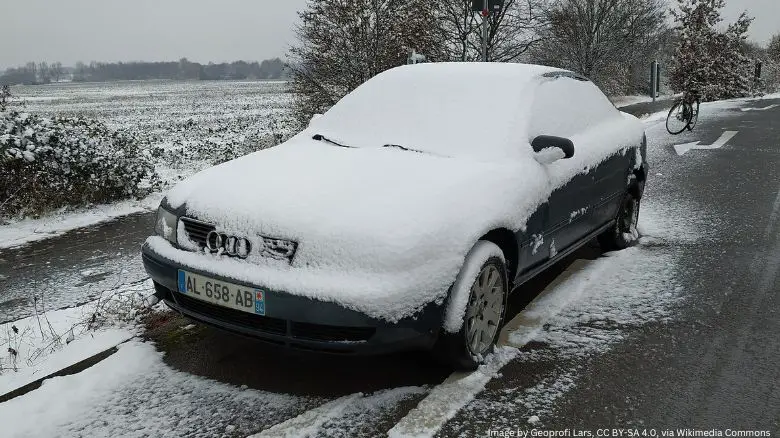
Trust your gut
As someone who has driven a wide range of classic cars, I can tell you that intuition plays a big part in winter driving.
If you’re not confident in your ability to handle your car in adverse conditions, or if you’re overly worried about potential damage, it might be best to store your car during the winter.
On the flip side, if you feel comfortable and well-prepared, go ahead and embrace the adventure.
Balance passion with practicality
Classic cars are more than just investments; they’re labors of love. That said, it’s important to strike a balance between your passion for driving and the practical considerations of maintaining your car.
Assess the risks, prepare your car for winter conditions, and always prioritize safety.
Embrace the community
One of the greatest aspects of classic car ownership is the camaraderie among enthusiasts. Share your experiences, ask for advice, and learn from others who have tackled winter driving with their classic cars.
The collective wisdom of the community can be an invaluable resource as you navigate the world of winter driving.
A snowy road trip – my experience
A few years back, I decided to embark on a road trip through the mountains with my beloved BMW 8 Series – the first car I ever invested in.
The decision wasn’t taken lightly, but I was well-prepared and eager for the adventure. And while it wasn’t strictly a winter road trip, the snowy conditions still provided a similar challenge.
Before setting off, I meticulously inspected and winterized my BMW, ensuring it was in top shape for the journey ahead. I refreshed all the fluids, replaced the tires, and packed a comprehensive emergency kit, just in case.

The trip itself was an incredible experience. The snow-capped peaks and frozen lakes created a breathtaking backdrop that simply couldn’t be replicated in any other environment.
The sense of accomplishment and connection with my car grew stronger with each passing mile, and the memories forged during that trip are ones that will be cherished for a lifetime.
This experience exemplifies the potential rewards of winter driving with a classic car, but it’s essential to recognize that it was the result of careful preparation, respect for my car’s capabilities, and an honest assessment of the risks involved.
The adventure was unforgettable, but it wouldn’t have been possible without the right balance of passion and practicality.
As soon as I was home, the 8 Series was treated to a well-deserved thorough clean and service to ensure it was protected against any potential long-term damage.
So, should you drive a classic in winter?
Ultimately, classic cars can be driven in the winter, but they may suffer long-term damage from salt and dirt if not cleaned regularly. The safety of driving classics in colder conditions also needs to be taken into consideration, as they have far fewer driver aids than modern cars.
The decision of whether to drive a classic car in winter is yours and yours alone. Weigh up the pros and cons, trust your instincts, and remember that you know your car better than anyone else.
With the right attitude, preparation and respect for the risks involved, driving a classic car in winter can be one of the most rewarding experiences you’ll ever have.
ABOUT THE AUTHOR
Adam Chinn writes about the intersecting worlds of classic cars, driving pleasure, and smart investment strategies. Starting his journey at 26, he’s proven that one doesn’t need to be wealthy to begin investing in classic cars.
Adam’s insights have been recognized on platforms such as MoneyInc, Swagger Magazine, and Top Speed.
Your journey to smarter car investments starts here.
The latest classic car data analysis, news, and expert articles delivered straight to your inbox.
- Take the guesswork out of classic car investing
- Get the tools and strategies you need to take action
- Learn the market inside-out
- Make informed decisions with confidence
Register now to see the best and worst performers, every month
You can unsubscribe at any time




